
Ang Mo Kio is a planning area and residential town situated in the North-East of Singapore. Located approximately 11 km (6.8 mi) north of the Downtown Core district, Ang Mo Kio is the 3rd most populated planning area in the North-East Region and ranks 8th in terms of population in the country overall. The planning area is located at the south-western corner of the North-East Region, bordered by the planning areas of Yishun to the north, Sengkang to the north-east, Serangoon to the east, Bishan to the south and the Central Water Catchment to the west.
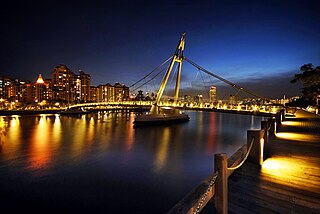
Kallang is a planning area and residential zone located in the Central Region of Singapore.

Bishan, also known as either Bishan New Town or Bishan Town, is a planning area and matured residential town located at the northernmost portion of the Central Region of Singapore. Statistically, the area is ranked the 38th biggest in terms of geographical size and the 22nd most populated planning area in the country. It is located at the most Central point of Singapore, and it comprises Upper Thomson, Marymount, Shunfu, Sin Ming, Bishan North and Bishan East. There are also many private residential properties in Bishan. Bishan is ranked 15th in terms of population density. Apart from its boundary with the Central Water Catchment in the west, Bishan borders three other planning areas: Ang Mo Kio to the north, Toa Payoh to the south, and Serangoon to the east.
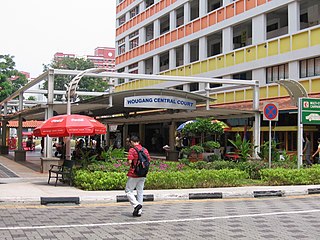
Hougang is a planning area and mature residential town located in the North-East Region of Singapore. The town is the most populous in the region, being home to 247,528 residents as of 2018. Hougang planning area is bordered by Sengkang to the north, Geylang and Serangoon to the south, Bedok to the southeast, Toa Payoh to the southwest, Paya Lebar to the east, Ang Mo Kio to the west and Bishan to the southwest.

The Central Expressway (CTE) in Singapore is the major highway connecting the city centre of Singapore with the northern residential parts of the island, including Toa Payoh, Bishan and Ang Mo Kio and further onwards to the Seletar Expressway and the Tampines Expressway.

The Kallang River is the longest river in Singapore, flowing for 10 kilometers. from the Lower Peirce Reservoir to the Kallang Basin. It originates in the planning area of Central Water Catchment, flows in a southeast direction through Bishan and Toa Payoh, before finally arriving in Kallang.

Yio Chu Kang is a sub-urban area in the northeast of Singapore, with proximity to the Ang Mo Kio, Lentor, Seletar and Sengkang areas. Deriving its name from the Yio Chu Kang Village, it is still known for lush greenery and low-density housing with high-rise public housing in its southern fringes.

Yio Chu Kang MRT station is an above-ground Mass Rapid Transit (MRT) station on the North South line in Ang Mo Kio, Singapore, near the junction of Ang Mo Kio Avenue 6 and Ang Mo Kio Avenue 8.

Bishan Depot is a depot located on the Mass Rapid Transit in Bishan, Singapore. It was completed in 1986 by American architect Vikas M. Gore and the 12,000 square metres maintenance area at cost of S$300 million.

The Bishan Public Library is a library in the National Library Board network situated at Bishan, Singapore just behind Junction 8 Shopping Centre. It opened on 1 September 2006 by Deputy Prime Minister, Wong Kan Seng.

The North-East Region of Singapore is one of the five regions in the country. The region is the most densely populated and has the highest population among the five, with Sengkang being its most populous town as of 2020 and Seletar as the regional centre. Comprising 13,810 hectares, it includes seven planning areas and is largely a residential region with 217,120 homes. Housing largely consists of high-density HDB public housing estates, however private housing is also present in the region. As its name implies, it is located in the north-eastern part of Singapore.

Bishan-Ang Mo Kio Park or Bishan-AMK Park, is a major park in Singapore, located in the popular heartland of Bishan. Serving the residents of Bishan, Yishun and Ang Mo Kio, the park sits entirely within Bishan, running along the Ang Mo Kio–Bishan boundary line, which is situated at Ang Mo Kio Avenue 1. In the middle of the park lies the Kallang River, which runs through it in the form of a flat riverbed.

The North–South Corridor (NSC), originally conceptualised as the North-South Expressway, is an under-construction expressway that will be the 11th of Singapore's network of expressways when completed. The North South Corridor will serve increasing traffic along the north-south corridor that is currently served by the Central Expressway (CTE). The 21 kilometres (13 mi) expressway will cost about S$7–8 billion when fully completed in 2027 as North-South Corridor and will connect the East Coast Parkway (ECP) with the northern parts of Singapore.

Steffen Lehmann is a German-born architect and urban designer.
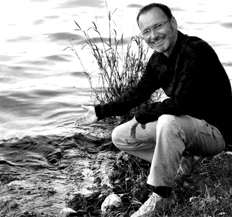
Herbert Dreiseitl is a sculptor, artist, landscape architect and interdisciplinary urban planner. He founded the firm Atelier Dreiseitl in 1980 with a vision to develop liveable cities inspired by a deep understanding of water. In 2013 the studio was acquired by the Danish-based international consultancy group and continued under the name Ramboll Studio Dreiseitl. As of 2023 Dreiseitl's office is located in Überlingen, Germany, still a local affiliate of Ramboll. He has taught courses at the National University of Singapore and at Harvard University.

Towers in the park is a morphology of modernist high rise apartment buildings characterized by a high-rise building surrounded by a swath of landscaped land. Thus, the tower does not directly front the street. It was popular in North American and European cities in the 1960s and into the 1970s, especially for public housing. The towers themselves are typically simple, brick-clad high-rise buildings with rectangular footprints and little ornamentation other than repeating series of balconies for each apartment. However, some apartment buildings from this era use less conventional designs in the "tower in the park" format.
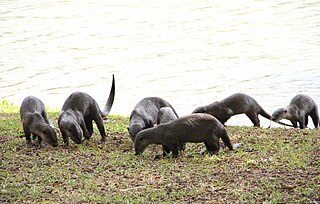
The Bishan Otter Family, also known as the Bishan 10 and previously known as the Bishan 5, is a family of smooth-coated otters that reside in Marina Bay, Singapore. The otters have become a popular attraction since they were first spotted in 2014.
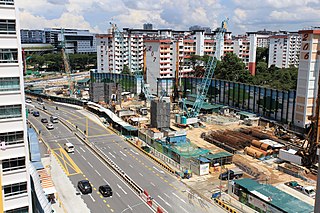
Teck Ghee MRT station is a future underground Mass Rapid Transit station on the Cross Island line located on the boundary of Ang Mo Kio and Bishan planning areas, Singapore. It will be located underneath Ang Mo Kio Avenue 6, between the junctions of Ang Mo Kio Street 31 and Ang Mo Kio Avenue 1.



















